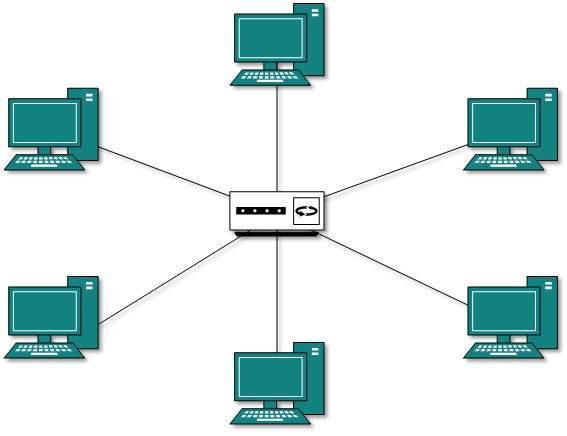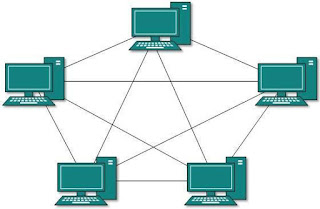Topologies, Types of Topologies
NETWORK TOPOLOGIES
There are Five basic
configurations used to connect computers they are the
Bus -:- Ring -:- Star -:- Mesh -:- Tree
Bus
topology
Bus Topology is the type of network. It was widely used in
the 1980’s. In Bus Topology The configuration is like that every computer
(node) shares the networks total bus capacities. In this configuration adding
more computers will reduce the access speed on the network. Each computer
communicates to other computers on the network independently this is referred
to as PEER-TO-PEER networking.
How a Bus
Peer to Peer Network Works?
All computers on a network have a distinct address just like
your house does. A message would be send from one computer with the address of
another computer attached to the message. The message is broadcasted to all the
computers on the network until the addressed PC accepts the message.
How it
worked
The type of wires used for Bus Networks in the 80’s was
called Thick net and Thin net. A Thick net cable (very large about 1 inch in
diameter usually yellow was hung around a room). Thin net cables were connected
to the PC’s NIC and a Transceiver. The Transceiver was tapped into the Thick net
cable To stop the message from bouncing back and forward down the wire (known
as signal bounce) both ends of the network are terminated with 50Ω resistors.
Problems
One of the main problems with this type of
network is that it is not very fault tolerant, a break or defect in the bus
would affect the whole network.
--------------------------------
Ring
Topology
In Ring topology each node is connected to the two nearest
nodes so the entire network forms a circle. Data only travels in one direction
on a Ring network.
How this
Topology works.
A node has information to send to another computer on the
network so it sends the information out on the network to the PC it is
connected to, if the information is for this PC (the recipients NIC address is
attached to the message, which is like putting an address on an envelope) then
the PC accepts the data otherwise it passes the information on to the next PC
by repeating the data back out on the line. This method of repeating the data
helps keep the integrity of the data readable by other computers.
How it
Works
As it is better to have computers take turns using the
connecting Data cable, Ring topologies incorporated a system called Token
passing. In this topology, to transmit on the wire your computer must have
control of the token or wait for the token to be free. Larger Token Ring
networks use multiple tokens.
Problems
and Solutions
The drawback to this type of topology is that a
single malfunctioning workstation can disable the whole network. To make sure
all the information is sent the receiving PC sends the token back to the
sending PC after it has received all the data. If the sending PC is finished
sending it passes the token to the next PC. This type of network was also
widely used in the 1980’s. This type of network used Thin net cable joining
nodes. In the mid 1980’s Thin net cable was replaced by Category 3 Ethernet
cable capable of handling up to 10Mbps.
--------------------------------
Star
Topology
In a Star topology every node is connected through a central
device such as a Hub, Switch or Router. Compared to a Ring or Bus topology a
Star topology requires that more thought be put into its setup
The Good
and Bad of a Star Network
The upside of a star network is that if any one
cable fails then only the node connected on that cable would be affected.
Another positive point to this type of network is that it is very simple to
join two star networks together by connecting their central devices to each
other. As each computer is connected to a central device (Hub) the location of
the Hub must be made as central as possible, so as to reduce cable lengths. The
drawback to this type of topology is if a central device was to fail then all
computers connected to that device would not be able to see the network.
----------------------------------
Mesh Topology
Mesh topology can be defined as: It is the type of a
network as Star, Ring and other topologies but in this topology every and each
computer node is directly connected with each and every computer nodes present
in the network. This network occur through cables it means network cables. In Mesh Topology The connection occur through Cables are some how like that in this each and every node of computer in the Network is directly connected to the each and every computer present in the network. or in The Topology.
----------------------------------
Tree Topology
A tree topology is the combination of characteristics of bus and star topologies. It consists of groups of star-configured workstations connected to a linear bus backbone cable. Tree topologies is the topology that allow for the expansion of an existing network, it also enable schools to configure a network to meet their needs.
Bus, Mesh Topology, Network Topology, Ring Topology, Star Topology, Topologies, Topology,
Bus, Mesh Topology, Network Topology, Ring Topology, Star Topology, Topologies, Topology,








No comments
Post a Comment